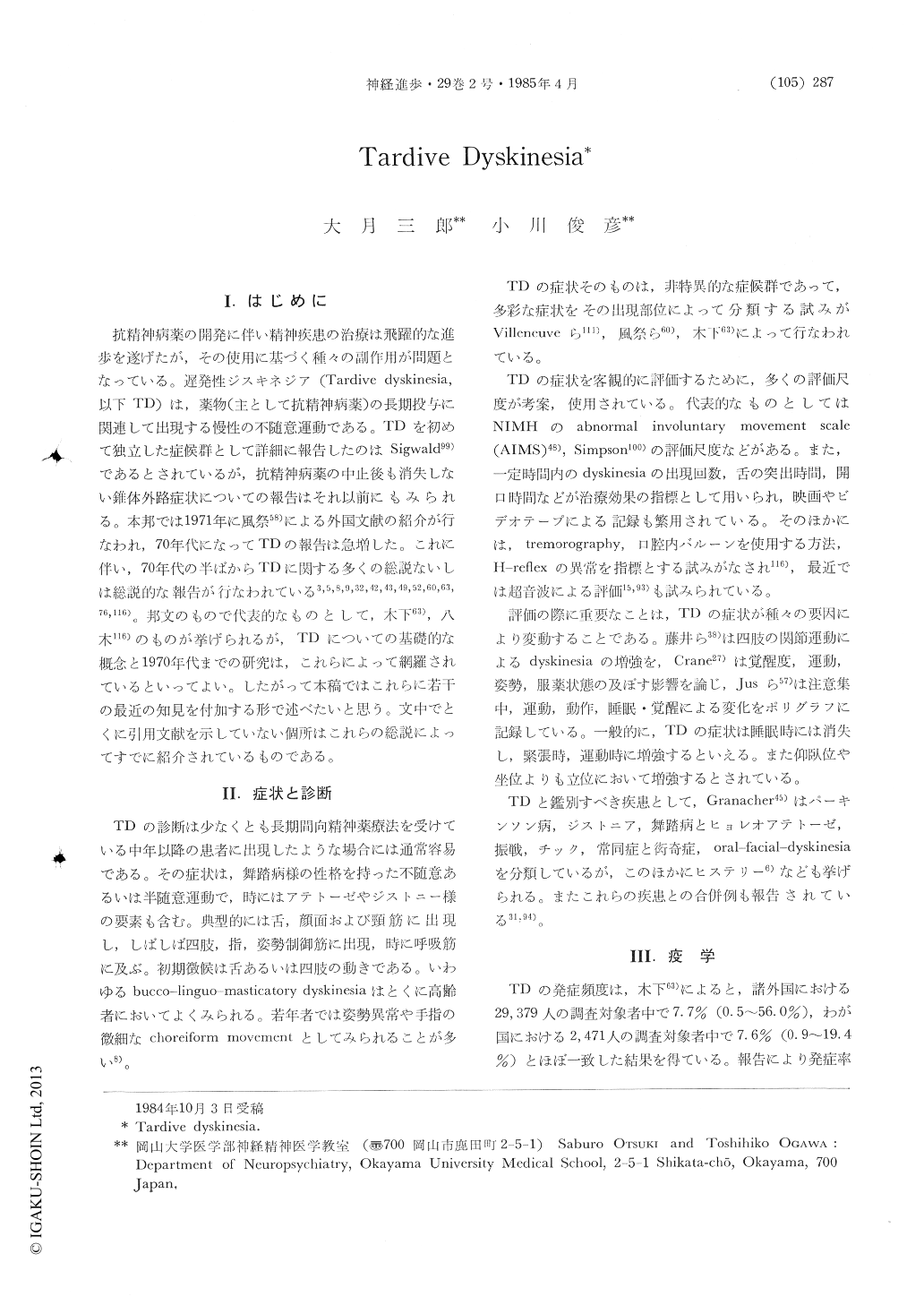Japanese
English
- 有料閲覧
- Abstract 文献概要
- 1ページ目 Look Inside
I.はじめに
抗精神病薬の開発に伴い精神疾患の治療は飛躍的な進歩を遂げたが,その使用に基づく種々の副作用が問題となっている。遅発性ジスキネジア(Tardive dyskinesia,以下TD)は,薬物(主として抗精神病薬)の長期投与に関連して出現する慢性の不随意運動である。TDを初めて独立した症候群として詳細に報告したのはSigwald99)であるとされているが,抗精神病薬の中止後も消失しない錐体外路症状についての報告はそれ以前にもみられる。本邦では1971年に風祭58)による外国文献の紹介が行なわれ,70年代になってTDの報告は急増した。これに伴い,70年代の半ばからTDに関する多くの総説ないしは総説的な報告が行なわれている3,5,8,9,32,42,43,49,52,60,63,76,116)。邦文のもので代表的なものとして,木下63),八木116)のものが挙げられるが,TDについての基礎的な概念と1970年代までの研究は,これらによって網羅されているといってよい。したがって本稿ではこれらに若干の最近の知見を付加する形で述べたいと思う。文中でとくに引用文献を示していない個所はこれらの総説によってすでに紹介されているものである。
Abstract
Antipsychotic agents have been contributed to the management of various psychotic symptoms and have been broadly used. They are highly effective in alleviating the acute psychotic symp-toms and also seem to prevent later exacerbations of them. However, since these agents also produce various extrapyramidal disorders, their neurologi-cal side effects become a serious problem.
Tardive dyskinesia (TD) is one of the severeextrapyramidal motor disorders which likely to appear in the course of the long-term treatment of antipsychotic agents and is persistent even after the withdrawal of these agents.

Copyright © 1985, Igaku-Shoin Ltd. All rights reserved.


